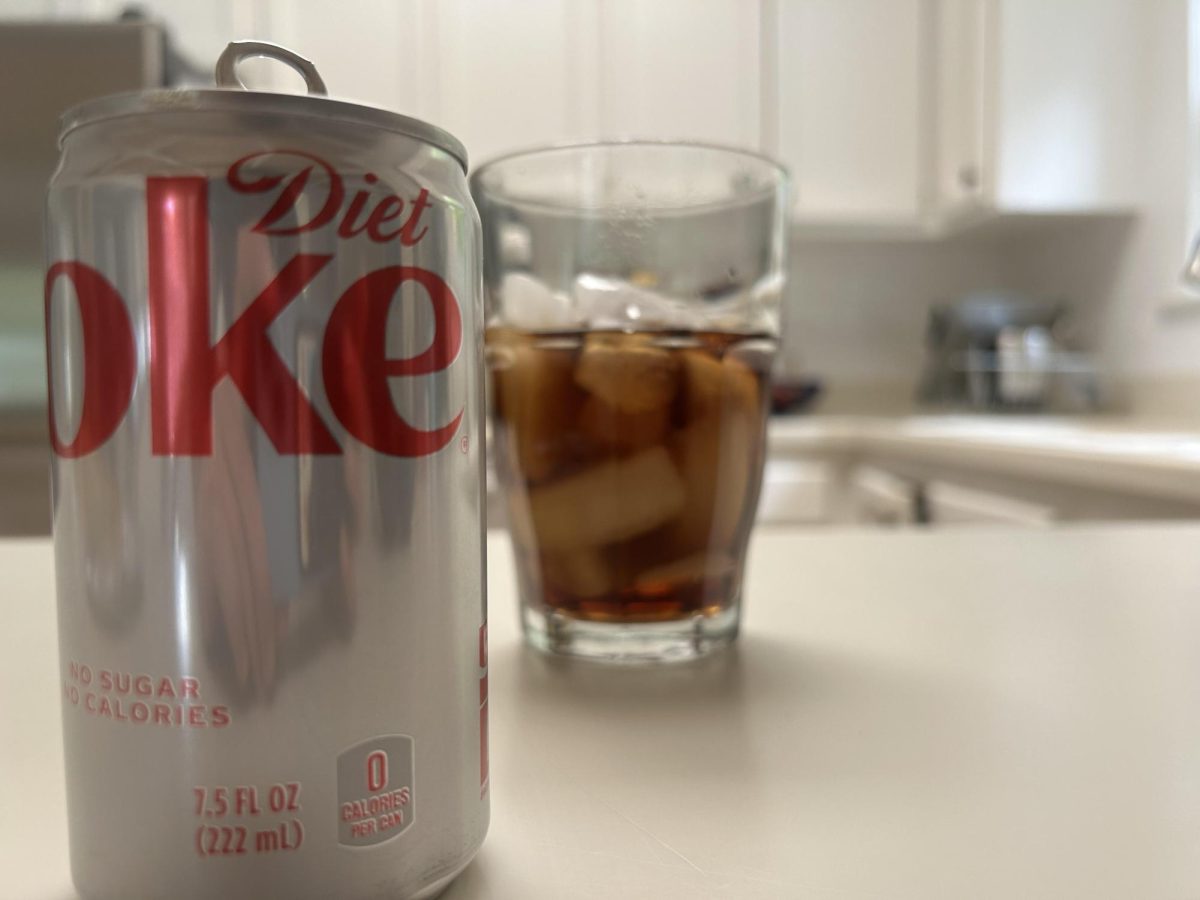According to the United States Department of Health and Human Services (HHS), the average American eats nearly 17 teaspoons of sugar a day, despite the United States Dietary Guidelines’ recommended maximum of 12 teaspoons on a 2,000-calorie diet. Consuming levels of sugar beyond the recommended amount has been proven to lead to several health issues. Apart from Type 2 diabetes, heart disease and cavities, excessive sugar consumption can also lead to obesity, a health issue that affected nearly 42.4 percent of Americans in 2018.
A typical misconception that has exacerbated these health issues is that sugar is strictly limited to the obvious soft drinks, candy bars, cakes and brownies. However, high doses of sugar can also be found in items promoted as “natural” and “healthy” including protein bars, peanut butter and low-fat yogurt. This makes it easy for Americans to end up with a surplus of sugar in their diets.
Dr. Susannah Wallenstrom, a registered dietitian nutritionist practicing at Marin Nutrition Consulting firm, clarifies the stark difference between added sugars and naturally occurring sugars. Although added sugars increase the flavor profile of different foods, they do not contain any of the nutritional value that fruit and vegetables provide.
“We love the taste of sugar because we’re born with a natural propensity to like sweet flavors. Because sugar doesn’t make us feel full, the more you eat, the more you want,” Dr. Wallenstrom said. “Eating a piece of fruit, on the other hand, doesn’t set off the same reaction in our brain because it has fiber and healthy nutrients to temper your inclination to want more.”
In addition to the enhanced flavor sugar contributes to different foods, added sugars also release a surge of feel-good chemicals to the brain in the form of dopamine. Because natural sugars are unable to invoke the same reaction, the brain begins to crave more of those added sugars. This release creates a perpetual cycle of continuously craving sugar that people have a hard time overcoming.

Considering the health risks associated with inadequate nutrition, the Tamalpais Union High School District requires their sophomore physical education classes to include a nutrition unit that covers a range of subjects, from the components of a balanced diet to the realities of the sugar industry and their marketing strategies.
As a physical education teacher, Byron Nelson has witnessed the relentless nature of sugar and its harmful effects on the body.
“Unlike proteins and fats that get broken down in your stomach, sugars are immediately absorbed into your bloodstream and hit you really fast. The more you overload your body with sugar, the worse it is for it. So, eating sugar along with other fibrous things, like almonds, will slow the absorption and reduce the pressure put on your liver to process it. Another good way to handle excess sugar is to go for a 10-minute walk after you eat,” Nelson said.
Legislation and sugar
The negative health effects caused by sugar, as well as its overbearing presence in our diets, have been known for years. However, America has not made any major strides toward eating healthier.
Dr. Michael Siegel, an American tobacco control expert and public health researcher at Boston University, believes the pervasiveness of sugar is largely due to corporate sponsorships, a strategy also commonly used by tobacco companies. In his research, which focused on the soda industry, Dr. Siegel found that companies like Coca-Cola donate money to health organizations to further their own interests.
“[Health organizations] now become biased because they’re getting their money and not going to be as outspoken or supportive of policies that might hurt the companies [that give them money],” Dr. Siegel said. “[The soda companies] are targeting groups specifically that they are afraid would otherwise be supporting policies against their interests.”
For example, one might assume the American Diabetes Association would be opposed to soda consumption, as soda is often a contributing cause of Type 2 diabetes, but, because the Association accepts money from soda companies, they are “essentially silenced,” from supporting any legislation harmful to soda companies’ profits, according to Dr. Siegel. This is because if the Association were to support a soda tax, their funding would be cut off. According to Siegel’s study, between 2011 and 2015, 96 national health organizations accepted money from Coca-Cola, PepsiCo or both companies.
These strategic sponsorships also allow sugar industries to drive attention away from the negative implications of their products and instead onto the beneficial programs they are funding.
“[Soda companies] can say, ‘Hey look, we’re doing all these good things. We’re good corporate citizens [who are] supporting all these good causes’ … [health organizations] are essentially being used as a pawn in a marketing strategy,” Dr. Siegel said.
Though the tobacco and sugar industries have fundamental differences, there are also distinct parallels that Siegel noticed in their sponsorship approaches.
“The strategy of corporate sponsorship is a well-established strategy that is used by all different types of corporations and companies who are just completely following the tobacco industry playbook,” Dr. Siegel said.
In addition to sponsorships, soda companies also spend millions of dollars lobbying against public health bills. From 2011 to 2014, Coca-Cola, PepsiCo and the American Beverage Association spent an average of nearly $10 million per year on lobbying, and of the 29 public health bills they spent money on, 28 were in opposition, according to a research paper co-published by Dr. Siegel.
Marketing and sugar
This playbook is far from limited to corporate sponsorships. In fact, the marketing of their products is one of the driving factors behind sugar’s pervasive presence in American diets. Dr. Wallenstrom is well aware of sugar companies’ marketing strategies, which extend far beyond typical advertisements or commercials.
“[Sugar companies] know how to capture an audience. Even when you go to the grocery store with your toddler in the cart, they see all of those sweet cartoon characters on cereal boxes because they’re at eye level. It’s called point of placement,” Dr. Wallenstrom said.
Through point of placement, children and teens are exposed to sugar products more than adults. Once first exposed to a product, due to the addictive nature of sugar, it is likely that person will buy the product again, establishing lifelong buyers. Nina Sadjadpour, a parent of two Redwood students, has witnessed firsthand the effect of this throughout her eighteen years of parenting.

“[Marketing] makes it harder for parents [to avoid sugar]. When you go to the grocery store and you see something that you’ve seen on TV in front of you, it just makes it all the more desirable for little kids who really don’t have the ability to [resist it],” Sadjadpour said.
In 2009, the food industry spent $1.8 billion on marketing aimed specifically at children. Sugary drinks, cereals, candy, sweet and salty snacks and fast food made up 91 percent of that year’s spending dollars. However, this marketing is not just limited to children either. Sophomore Julia Morrow has experienced the pervasive presence of sugar advertisements in her everyday life.
“It’s just so widely shoved down our throats. It’s everywhere you go. It’s cheaper. So it’s a lot easier to grab it and it takes a lot more self-discipline to be able to say no, and I think everyone struggles with that,” Morrow said.
Sugar is easy to access, addictive and now a leading cause of multiple health problems that America faces, including the obesity epidemic. Virtually all health experts agree that America needs to reduce its sugar consumption. Dr. Siegel believes holding sugar companies accountable is the first step.
“There’s a lot of different policy interventions that can be effective in reducing obesity, but the first thing we need to do is to get past the influence of the soda lobby,” Siegel said.
Although sugar has adverse effects on health, instead of insisting students cut sugar out of their diets, Nelson encourages them to take manageable steps towards healthier lifestyles.
“I tell students to focus on making incremental changes to the amount of sugar they’re eating. So, if you’re eating a brownie every night, maybe make the brownie with applesauce instead of just plain sugar,” Nelson said.













